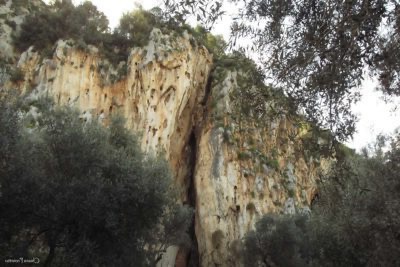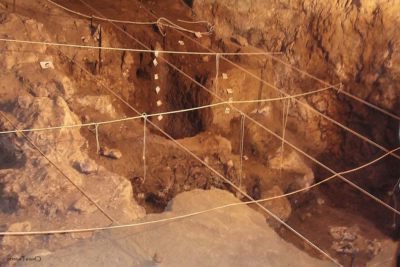A wonderful cave that testifies to the appearance of the first extinct men and animals in Sicily, ready to visit a milestone for paleontology?
Ad acquedolci, in the province of Messina, there is one spectacular cave which, since its discovery, has fascinated scholars from all over the world. A cave that testifies to the appearance of the first men and animals now extinct in Sicily and that shows how the territorial aspect of the island has changed over the millennia.

A cave rich in history
The Grotta di San Teodoro, this is its name, is considered one of the most important cornerstones in the world as regards the knowledge of the Upper Palaeolithic in the Mediterranean area.

Very important testimony of the life of the Paleolithic era, has been subjected to numerous researches since the middle of the last century. The cave was discovered in 1859 by Baron Anca during an exploration and holds incredible secrets, still not fully revealed today.
From research we know that the cave 200.000 years ago was located near a lake basin where an almost tropical climate prevailed; right in the place where the expanse of water once stood, excavations have brought to light fossil remains of animals such as hippos, a dominant species at the time, and a very rare example of a dwarf elephant dating back to about 28.000 years ago.
The remains of these hippos are also present in the fossilized excrements of the animals that first inhabited the cave 30.000 years ago, making it their lair, that is the hyenas.
Also interesting is the discovery of a second animal present, obviously in fossil remains, inside the excrements of these predators: thehydruntino.
This animal was similar to a small donkey: it could not swim and was endowed with contained intelligence, for this reason it was concluded that about 20.000 years ago Strait of Sicily it was connected to Calabria by a strip of land that emerged on the surface which made it possible for animals, such as the donkey, and men to pass through today's island.
To consolidate this theory is then the concomitance in that period with the event oflast ice age and last glacial maximum, that is the achievement of the lowest footage of the sea level due, in fact, to the glaciation that allowed the spread of man (appeared in Africa 2 million years ago and moved 1,5 million years ago to Europe, Asia and , after the last ice age, even in the Americas!).
Important finds
We also know that the appearance of man inside the cave dates back to about 13.000 years ago. Around the 30-40s, some excavations have found, on the upper layer of the one where the animal fossils were found, burial remains of hominids from the Upper Paleolithic.

No less than 7 burials, 5 skulls and 2 entire skeletal structures were found, 4 artifacts of these belonging to men and 3 to women. The most significant discovery is that of Thea skeleton (from the Latin Theodora, to connect it to the name of the cave); this one, who died at the age of 30-35 and 1.65 tall, believed to be a woman until a few years ago, could instead be a man.
Certainly he belonged to a high social class due to his intact teeth (he had no problems related to food) and his joints and tissues that were not worn (he had probably never worked). The skeleton is preserved at Museum of paleontology and geology Gaetano Giorgio Gemmellaro of Palermo, while the other human finds are divided between Rome and Florence.
The Antiquarium of Acquedolci
All the burials of these hominids were characterized by a layer of earth covered by a patina of ocher and around them personal objects were found, such as necklaces, now observable at theAntiquarium of Acquedolci. Furthermore, the excavations have brought to light the remains of fireplaces and stone tools in flint and quartzarenite that man surely used to hunt, work the skins or cook.
A cave not to be underestimated and not to be missed, therefore, is this one of San Teodoro. Go have a look!


























